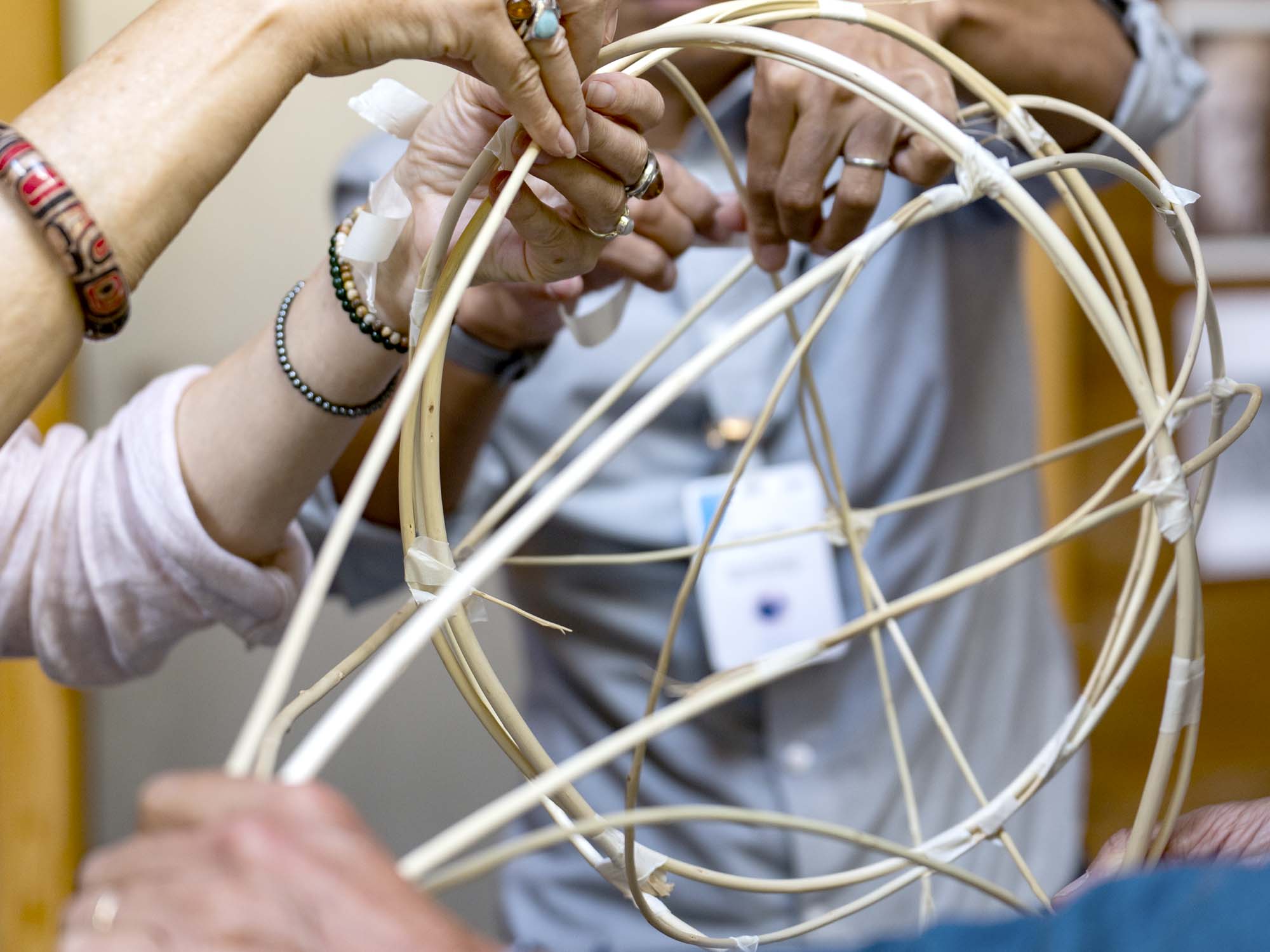In the summer of 2023, the journal Scientific American published an article on the astounding synchronization of electroencephalograms in human beings and animals within cooperative situations. Here is an area of research that raises far-reaching questions.
A large part of our daily lives does not take place alone but with others. When we share thoughts or feelings with others, when we make decisions together or partake in collaborative activities, we immediately recognize that these social interactions often bring in whole new elements. One simple bonus is all the warmth and determination that we feel when working with others on a common task. In regards to spiritual work, Steiner talked about the effect when people meditate collaboratively (not necessarily in the same room). He said that the effects are not multiplied but exponentially raised by the number of participants involved.1 More than 20 years ago, scientists began to ask whether the activity in the brain during collaborative activities can be measured with modern instruments.2
Dancing Neurons
Researchers discovered early on that the brainwaves of people who are talking or sharing an experience synchronize.3 Neurons at corresponding sites in different brains fire simultaneously, creating matching patterns like dancers moving in collaboration. Auditory and visual areas of the brain respond in a similar way to shapes, sounds, and movements, while higher-order brain areas behave similarly in more demanding tasks, such as making sense of something seen or heard.
More recently, it was discovered that synchrony between groups of people was significantly higher when individuals were cooperating with each other than when they were competing.4 In another study, those who listened and made the most effort to reach consensus—rather than those who talked the most—were the ones whose brains synchronized with others’ first, promoting synchrony in the larger group. “By talking to each other and coming to consensus as a group, participants’ brains aligned.”5 Synchrony has been linked to subjective reports of social connectedness, engagement, and cooperativeness, as well as experiences of social cohesion and “self-other merging.”6
Synchronization as the Basis of Consciousness?
In a recent group experiment (with 49 subjects!), participants perceived as having a high social status spoke more often and signaled disbelief to others. In their groups, there were unequal amounts of speaking and lower neural alignment. In contrast, participants with a central position in their real-world social networks encouraged others to speak and brought about a greater neural alignment in their groups. Socially central participants were also more likely to neurally align with others in their groups.7
Finally, it is interesting to note that in most of these studies, an important question was asked: is brain synchronization the basis for human interaction? If so, synchronization can be seen as the aspect of the brain that makes social interaction possible—or mirrors it. Even more radical than this thesis, large-scale synchronization of neural activity has been proposed as the neural basis of consciousness itself.8
Translation Joshua Kelberman
Image From the working group ‹An der Zukunft bauen› [Building the Future] with Rik ten Cate at the Goetheanum World Conference 2023. Photo: Xue Li
Footnotes
- Rudolf Steiner, Esoteric Lessons 1913–1923, CW 266/3 (Great Barrington, MA: SteinerBooks, 2008), lesson on October 13, 1922.
- Blood flow or electrical and magnetic activity are the most commonly used methods for neurological studies. Blood flow is usually measured with functional magnetic resonance imaging (fMRI), which detects changes in blood flow in the brain to identify active areas. Electrical/magnetic activity is measured with electroencephalography (EEG)/ magnetoencephalography (MEG), which records the electrical/magnetic activity of the brain via sensors on the scalp. Electrical impedance tomography (EIT) also uses electrical currents to create images of the brain, but the apparatus is much more compact.
- Synchrony resulting from “hyperscanning” (recording of two or more persons/organisms). Although synchrony between an organism and a stimulus (e.g., symphony orchestra), that is, between parts of one brain and the person’s other organs can also show synchrony, this is not what is meant here.
- X. Wang, R. Shi, X. Wu, J. Zhang, “Decoding Human Interaction Type from Inter-brain Synchronization by Using EEG Brain Network,” IEEE J Biomed Health Inform. (Nov. 2, 2023).
- L. Denworth, “Brain Waves Synchronize when People Interact,” Scientific American (July 1, 2023).
- A. L. Valencia & T. Froese, “What binds us? Inter-brain neural synchronization and its implications for theories of human consciousness,” Neuroscience of Consciousness (2020).
- B. Sievers, C. Welker, U. Hasson, A. M. Kleinbaum & T. Wheatley, “Consensus-building conversation leads to neural alignment.”
- A. L. Valencia & T. Froese, “What binds us? Inter-brain neural synchronization and its implications for theories of human consciousness,” Neuroscience of Consciousness (2020).













